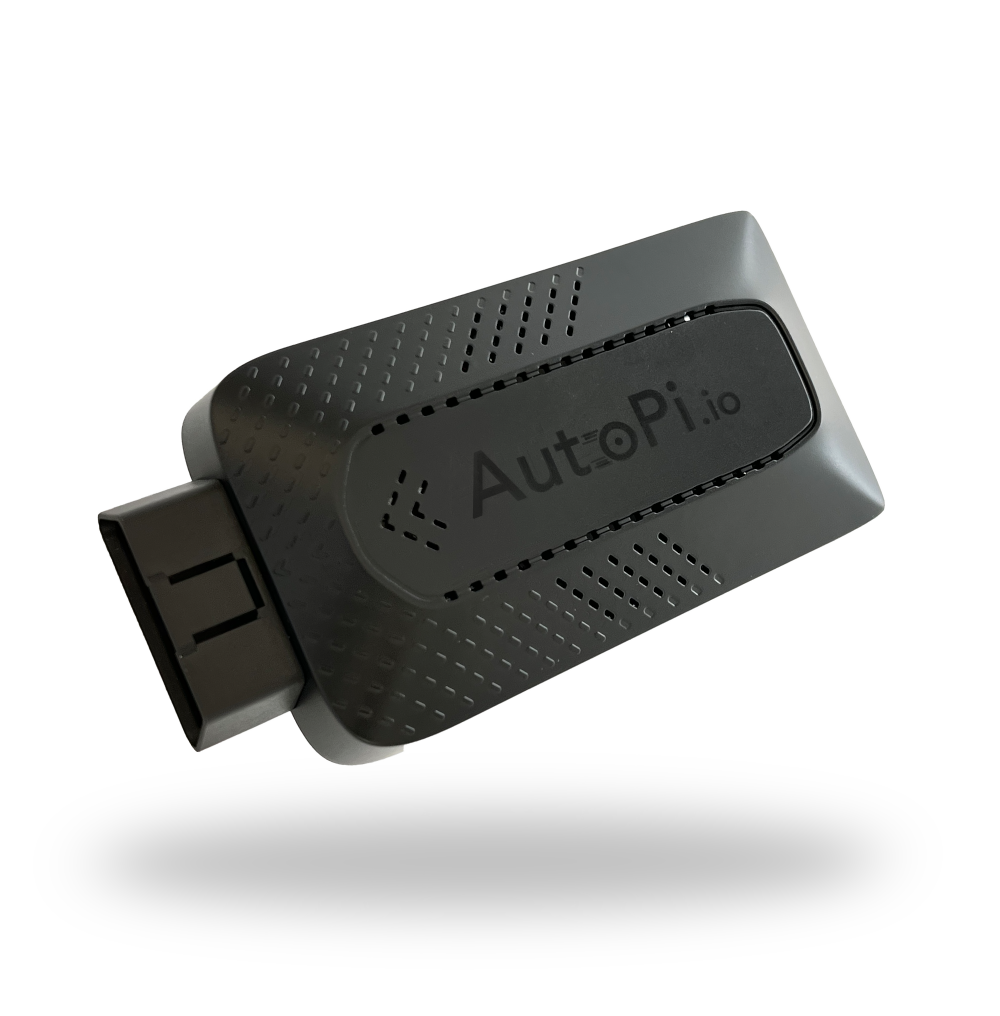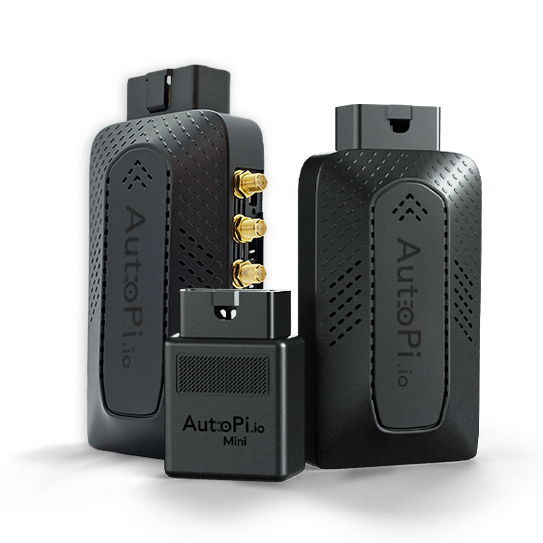Using the CAN Bus Commands

Working with the CAN bus is on your own risk. Playback and sending commands to the vehicle can be used to control functions in the vehicle affecting the behavior of the vehicle. We recommend that you NEVER do testing on a vehicle in motion and that you have the parking brake enabled while you test.
In this guide, we will explore how you can communicate and interact with your vehicle's CAN bus. Typically, there are two types of CAN busses.
One type responds to requests for data, that is to say, it almost acts like an HTTP server - it receives a request for a specific data point (let's say speed or RPM) and it sends the requested data back. This type of CAN bus is usually handled with PIDs.
The second type sends all the vehicle's data on the CAN bus. This means that there is going to be large amounts of data being streamed. We call this type of data CAN Messages. Within those CAN messages are the so-called CAN signals. Each signal usually represents a specific data point, like speed or RPM.
Sending PID's
Let's start off with the obd.query command. This command is
used to query the first type of CAN busses. Let's take a look at an example:
obd.query test mode=01 pid=0C
You may need to add the force=True parameter to make sure the ECU in the vehicle accepts the
command.
This command can be run from my.autopi.io or
local.autopi.io's web consoles. Let's try to explain each element of the
command. Firstly, obd.query - that is simply the command that we're attempting to execute. Next is
test. This is the name that the PID will use. It makes no difference to the comand's execution
what the name is going to be, but if you end up setting up a logger, the name will be used to save
that data on your account, so you can later reference it using the name to create a widget.
Next, there is the mode=01 and pid=0C pieces of the puzzle. These are the specifications of
which data point you'd like to query for. In this case, we are asking the ECU of the vehicle to
respond with the current RPM. You can see a full list of standard PID's
here. Your vehicle may be able to support more or less
PID's than shown on Wikipedia.
If you'd like to run this command directly
from the device (through SSH or similar), you will need to
prepend the autopi keyword, like so:
autopi obd.query test mode=01 pid=0C
The CAN Interface
The CAN interface is somewhat different than just sending standard PID's. It relies more on parcing the full data stream on the CAN bus. This is far more advanced, but it also opens up to a whole new level of fun.
Setting the Protocol
The AutoPi is able to support a wide range of protocols. When you insert it into your vehicle it will try to autodetect the protocol used by the vehicle. It is not always going to be the case that the same protocol is used for all CAN traffic. In fact, CAN traffic may flow on more than one protocol in your vehicle. Switching the protocol on the AutoPi makes it listen for traffic on different electrical pins. You can check the current protocol settings using this command:
obd.protocol
This will give you a list of all the protocols you can set. Changing the protocol can be done with this command:
obd.protocol set=<num>
Where <num> is the protocol number.
Dumping/Reading Data From the CAN Bus
The new interface opens up for dumping data from the CAN bus on the protocol selected. This can be
done using the obd.dump command. Using the command is very easy:
obd.dump duration=5
Optional parameters:
duration=<seconds>: How many seconds to record data. Default is2seconds.file=<path>: Write data to a file instead of displaying it on the screen.
This will dump a list of messages recorded within 5 seconds of starting the execution of the command. Those messages might not make much sense at first glance, but that's okay. Usually, DBC files are used to parse those messages into human readable data.
Playback of a Recorded File
A file recorded with the obd.dump command can be played/replayed to the vehicle using the
obd.play command. Here's an example usage:
obd.play file=<path>
The will playback the entire file on the CAN bus.
Optional parameters:
slice=<T|B>: Slice the list of messages before sending on the CAN bus. Based one the divide and conquer algorithm. Multiple slice characters can be specified in continuation of each other.T: Top half of remaining result.B: Bottom half of remaining result.
filter=<expression>: Filter out messages before sending on the CAN bus. Multiple filters can be specified if separated using comma characters.+[id][#][data]: Include only messages matching string.-[id][#][data]: Exclude messages matching string.+duplicate: Include only messages where duplicates exist.-duplicate: Exclude messages where duplicates exist.+mutate: Include only messages where data mutates.-mutate: Exclude messages where data mutates.
group=<id|msg>: How to group the result of sent messages. This only affects the display values returned from this command. Default isid.test=<true|false>: Run command in test-only (dry-run) mode. No data will be sent on CAN bus. Default isfalse.
All the filter parameters can be used to find the specific commands that you are seeking. With filters you can remove data that you know is not relevant for finding your specific command (like data that appears a lot). With the slice parameter you can use the "divide and conquer" technique to find the specific command.
Sending a Single Message
The obd.dump and the obd.play commands is typically used for finding a single specific
command you want to send to the car. This can be lock/unlock or something else controlling your
vehicle.
When you have the specific command, you can send it directly using the
obd.send command. Here's an example:
obd.send 2101#280000000003E800 expect_response=True auto_format=True
The first part before the # is the ECU number (the header) and the last part is the data payload.
You may need to remove the expect_response if the ECU doesn't respond on the message you've
send.
Non-OBD2 Queries
Sometimes a vehicle supports non-OBD-2 queries. An example of this is manufacturer proprietary protocols. When this is the case, you need to enrich the queries with CAN Flow Control parameters.
Let's look at an example of a proprietary query, where the request data is 1AA # 02 00 01 00 00 00 00 00,
and the response is 2AA # 02 XX XX 00 00 00 00 00, where the XX bytes are the data bytes. For
the sake of having the example complete, let's assume that this queries for the speed in kph. If
we try to do this query as we might with any other OBD-2 PID, we won't get a response. This is
because the device does not know how the message looks like. This might seem pointless if these
request-response messages are the only traffic on the CAN bus, however, imagine if there are hundreads
of CAN frames being sent on the bus every second. How is the device to know which CAN frame is the
response? We need to specify this manually.
If you take a look at the obd.query command, you'll notice several
arguments dedicated to can flow control. The 2 relevant ones are can_flow_control_filter and
can_flow_control_id_pair.
can_flow_control_filter - filters out all non-query related can frames from the traffic. Although you
might get an expected response without specifying this parameter, you should still add it. The format for
it is can_flow_control_filter=<Pattern>,<Mask>. In the current example, that would look like this:
can_flow_control_filter=2AA,7FF.
can_flow_control_id_pair - pairs the query request header (Transmitter ID) to the response header (Receiver ID)
in format can_flow_control_id_pair=<Transmitter ID>,<Receiver ID>. In this example, it would be: can_flow_control_id_pair=1AA,2AA.
All this taken into account, the command would look like this:
$ obd.query PROPRIETARY_SPEED header=1AA mode=00 pid=01 can_flow_control_filter=2AA,7FF can_flow_control_id_pair=1AA,2AA force=True
_stamp: '2023-08-28T12:22:31.253543'
_type: proprietary_speed
value: 2aa0200430000000000
Next, we'll need to extract the speed data with a formula. In this case, all the data bytes correspond to
the data we're looking for, so we can use the simple formula of bytes_to_int(message.data):
$ obd.query PROPRIETARY_SPEED header=1AA mode=00 pid=01 can_flow_control_filter=2AA,7FF can_flow_control_id_pair=1AA,2AA force=True formula='bytes_to_int(message.data)'
_stamp: '2023-08-28T12:22:35.052518'
_type: proprietary_speed
value: 67
There are a few quirks to keep in mind when working with these and with CAN bus in general:
- As long as the vehicle's bus is autodetected, the
obd.querycommand will try to verify that the protocol is still valid by sending a known valid OBD-2 message onto the bus and waiting for a reply. If the vehicle does not support standard OBD-2, this will cause the command to fail. To prevent this, either ensure the vehicle supports OBD-2, or create a new bus, which does not have the 'autodetected' flag. - The selected protocol's header length must match the header length of the sent/received messages. For
example, you can not specify
protocol=7, which has a 29-bit header length, and then query for an 11-bit message. You will not get the expected result. Keep in mind that there will always be a protocol selected, even when one is not specified in the command. When the command is being run through the logger, this will be thedefaultprotocol.
Using the Cloud CAN Analyzer
All the above commands are how the interface to the vehicle works. We have combined all of this in an interactive CAN Analyzer, which is accessible from the AutoPi Cloud in Device > CAN Analyzer. If you don't see that menu link, you need to make sure that you've installed the CAN Analyzer add-on from the Add-ons page.
The CAN Analyzer makes working with your car much simpler. To find your specific command follow these steps:
-
Configure your CAN Bus interface. On the account page under "Vehicles" you can autodetect the most common CAN Bus. If you need to work with a special CAN bus, make sure you have the right baud rate configured.
-
Select the Bus you want to use and press record. The device will make a "beep" sound when the recording begins and another one when the recording ends. Make sure that the CAN command you want to record is happening between the two sounds (like door unlock or window control).
-
The recording is now stored on the device and you can play it back immediately using the CAN player on the right-hand side of the screen.
-
You will see that a lot of data is returned from the bus, so to find the specific command for your function, we recommend using the filters on the right-hand side. Typically, a lot of the data is repetetive, so you can start out by removing all the duplicates.
-
With the filters, narrow down the results to as few as possible. Then you can replay the commands one by one and see if you can find the command controlling the function you are looking for.
-
When you have found your command you can always resend it by using the
obd.sendcommand described above.
 Compare all AutoPi devices
Compare all AutoPi devices